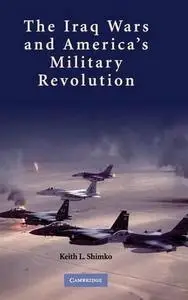The Iraq Wars and America's Military Revolution By Keith L. Shimko
2010 | 263 Pages | ISBN: 052111151X | PDF | 2 MB
2010 | 263 Pages | ISBN: 052111151X | PDF | 2 MB
The Revolution of Military Affairs (RMA) came to dominate the military discourse from the end of the '91 Gulf War until the rise of the insurgencies in Iraq and Afghanistan. Although focus has now shifted to counterinsurgency (COIN), this does not mean the theories of RMA are no longer applicable. In "The Iraq Wars and America's Military Revolution", Shimko not only tracks the rise and influence of RMA on the development and employment of the US military, but also examines its continuing relevance in the modern battlespace dominated by COIN operations. The result is an excellent book that is a must read for all involved or interested in the US military strategy in the modern age. The book is well structured. Divided chronologically into keys periods of military development, Shimko's analysis of the evolution of RMA is readily understood with reference to both military operations and technological development. Given the continued influence of the Vietnam experience on the modern US psyche, commencing the book in the period between Vietnam and the Gulf War positions the book's subject matter beautifully. The analysis is further developed through an analysis of the changing strategic, political and technological circumstances that influenced the development of US strategy and force development following the Gulf War, immediately post-911, during the 2003 Iraq Invasion, and in the insurgencies that have dominated US thinking since 2004. My one criticism of the book is that the analysis of modern technology on modern counterinsurgency is glanced over with only a limited analysis provided. Reading the final sections of this book one is given the impression that the RMA stops when an insurgency begins. This is simply not true, the technology that lies at the heart of RMA has a definite application in COIN operations, but we are still trying to find where exactly that is. Efforts are bearing fruit, but it will take time. Shimko's limited analysis in this area is a little disappointing. Shimko's ability avoid the politics that are generally involved in any discussions of military involvement in its current conflicts is commendable. His politically detached assessments of the military aspects of these operations allows the reader to get to the heart of the issues without having their political sensibilities challenged. This is not an easy task given the politically charged nature of the operations being discussed, but Shimko does an excellent job. In summary: an excellent book with only one shortcoming. I recommend this book to anyone interested in the: 1. The role of technology in modern US strategy. 2. The way that the US has responded to changing operational circumstances in the development of their strategy; 3. US involvement in the Middle East and South Asia since 1991.



